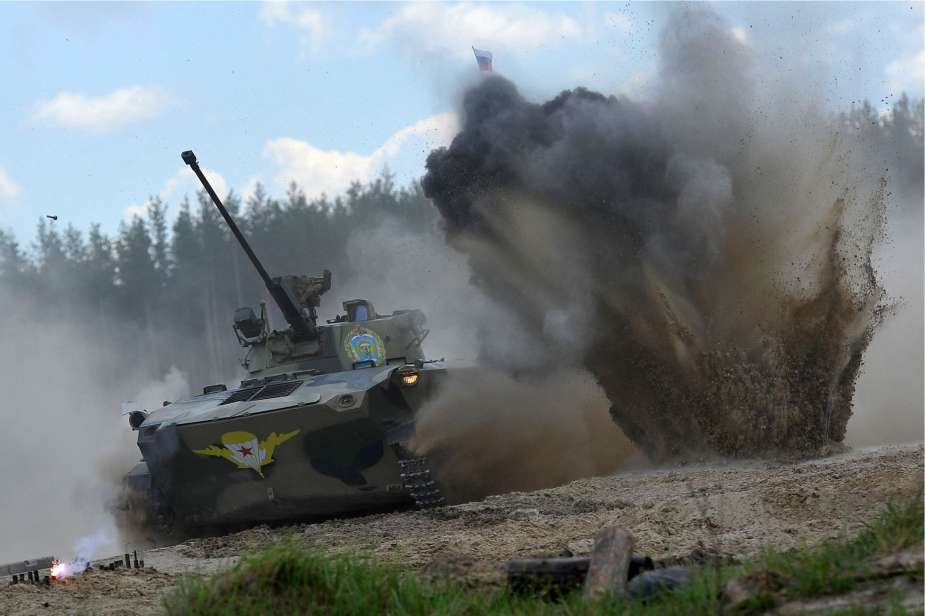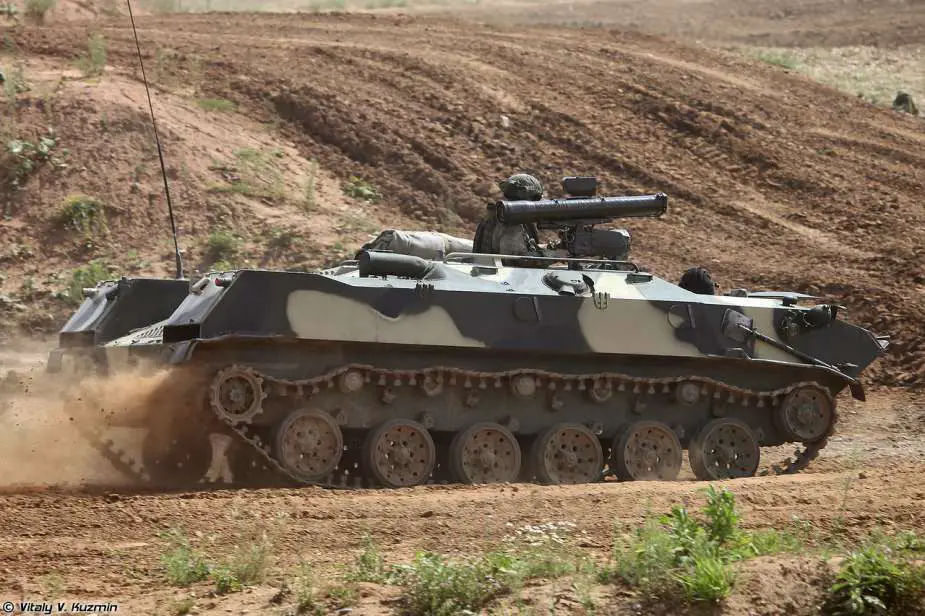- Army
- Conflicts in the world
- Israel - Iran conflict 2025
- Pakistan - India Conflict 2025
- Russia Ukraine War 2022
- Libya conflict day by day
- HAMAS - Israel War 2023
- Operation Serval in Mali French Army
- Sangaris operation Central African Republic
- Sangaris opération militaire République Centreafrique
- Ukraine - Russia conflict
- Syria conflict news
- Defence & Security Industry Technology
- Armies in the world
- Analysis Defense and Security Industry
- Conflicts in the world
- Navy
- Air
Russian paratroopers receive refurbished BMD-2 and BTR-RD armored vehicles
As reported by Russian media on October 5, 2023, Russian paratroopers have recently taken delivery of a batch of refurbished BMD-2 airborne combat vehicles and BTR-RD armored personnel carriers as part of the ongoing modernization efforts within the Russian armed forces. The equipment was supplied by the Volgograd branch of Kurganmashzavod, an enterprise part of the Rostec High-Precision Complexes holding.
Follow Army Recognition on Google News at this link

Russian BMD-2 airborne armored vehicle during a realistic exercise (Picture source: Russian social media)
These vehicles have been designated for deployment to airborne units, with some earmarked for use on the Ukrainian frontline. During the refurbishment process, all major components and assemblies underwent replacement or thorough repair, followed by sea and fire tests to ensure operational readiness.
While the exact number of vehicles in this particular shipment remains undisclosed, it is part of a larger trend where similar transfers occur nearly on a monthly basis. Notably, the production and repair capacity for these vehicles has seen substantial growth, as explained by numerous articles on our website.
The BMD-2, designed by the Russian defense company Arkadyi Shabalin, is an airborne tracked armored Infantry Fighting Vehicle (IFV) that was first developed in 1985 and entered service with the Russian armed forces in 1988. Its primary role is to provide infantry support for airborne forces, with the added capability of being airdropped into combat zones thanks to its lightweight hull, weighing only 8,225 kg. The vehicle can carry up to four paratroopers in addition to its crew of three.
The BMD-2 boasts a one-man turret housing a 30 mm 2A42 stabilized cannon, a coaxial 7.62 mm PKT machine gun, and an anti-tank guided missile launcher for AT-4 or AT-5 missiles. Its hull and turret are constructed from welded aluminum alloy, providing protection against small arms fire and shell splinters. In terms of mobility, it is powered by a 240 hp liquid-cooled diesel engine and features a hydropneumatic suspension system, achieving a maximum road speed of 60 km/h and a cruising range of 450 to 500 km. Additionally, the BMD-2 is fully amphibious, reaching a top speed of 10 km/h in the water, thanks to two water jets at the rear of the hull.
Although the BMD-2 has been in service for several years, it has been complemented by more advanced models like the BMD-3 in the Russian airborne forces, playing a vital role in providing fire support and mobility during airborne operations. Initially adopted by the Soviet army in the 1980s, the BMD-2 is currently undergoing upgrades to the level of more modern BMD-2K-AU and BMD-2M.
The BTR-RD, also nicknamed the "Robot," is a Soviet-designed tank destroyer introduced in 1983. It was primarily developed in the late 1970s to transport anti-tank teams supporting the Soviet VDV airborne forces. Its key external modification from the base vehicle, the BTR-D armored personnel carrier, is the inclusion of a 9P135M anti-tank missile launcher mounted on its right roof side. This launcher is capable of firing 9M113 Konkurs anti-tank missiles, with the option to use 9M111 Fagot missiles. Both missile types are SACLOS-guided, following the gunner's sight for targeting accuracy.
In terms of firepower, the BTR-RD typically carries a minimum of four anti-tank missiles, with the possibility of carrying up to 12 missiles if passenger capacity is reduced. The vehicle also retains two 7.62mm PKT bow machine guns with a total ammunition capacity of 2,000 rounds. Recognized for its mobility, the BTR-RD's relatively low weight and 240 hp diesel engine contribute to its agility. It is fully amphibious, utilizing two water jets for water traversal, and it can be airdropped from low-flying transport aircraft. However, its aluminum armor offers limited protection against heavy machine gun rounds, and the operator using the missile launcher is partially exposed. The BTR-RD remains in service with the Russian military, with some upgrades, such as the addition of the 9K135 Kornet missile system in 2019.

Russian BTR-RD anti-tank vehicle during a demonstration in 2018 (Picture source: Vitaly Kuzmin)
News Russia Ukraine War


























